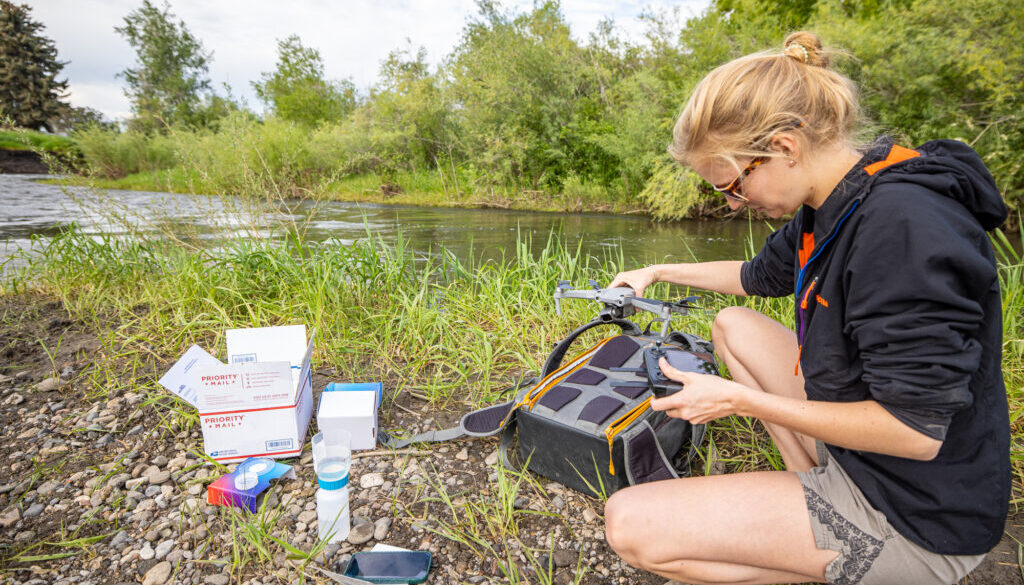PFAS contaminating 83% of tested waterways, study finds
Clean water advocacy groups said this week that they have found toxins linked to cancer and other health problems in more than 80% of tested waterways around the United States, adding to the growing body of evidence about the pervasiveness of per- and polyfluoroalkyl substances, better known as PFAS.
Results of the study, which was carried out by the nonprofit organization Waterkeeper Alliance, were released Tuesday. The group said PFAS toxins were detected in 95 of 114 waters tested, and some samples were found to contain levels of PFAS thousands of times higher than the levels considered safe for drinking water by the Environmental Protection Agency (EPA.)
Maryland, Georgia, South Carolina, and Florida were among the states with the highest number of water samples containing PFAS.
The results “demonstrate that existing laws are inadequate for protecting us,” said Marc Yaggi, CEO of Waterkeeper Alliance.
The study is the first nationwide surface water quality survey to measure PFAS, and probably the most extensive survey of PFAS presence in surface waters that has ever been conducted in the US, according to the group.
One type of PFAS known as PFOA is considered a likely human carcinogen. Another type, PFOS, is known to accumulate in humans and cause liver damage and birth defects in lab animals. Both were detected in 69% of samples.
The report noted that PFOA was detected above the EPA Interim Health Advisory Level of 0.004 ppt in samples taken in waterways located in 26 states and D.C. The highest level detected was 847 ppt in a sample from Kreutz Creek, Pennsylvania. PFOS was detected above the EPA advisory levels in 28 states and D.C. The highest level detected was 1,364.7 ppt in a sample from Piscataway Creek, Maryland.
These and other types of PFAS are used in a wide range of industrial processes and to make common consumer products, such as Teflon pan coatings and stain- and grease-resistant fabrics, among other things.
Sampling in 34 states
Sampling was conducted by more than 100 Waterkeeper groups in 34 states and D.C. Waterkeeper Alliance partnered with environmental engineering firm Cyclopure to carry out the sampling and testing. Cyclopure tested for 55 of the approximately 9,000 possible PFAS that exist in the class of chemicals.
One Waterkeeper group, based in Buffalo, NY, had a 100% detection rate for PFAS in nearby waterways. The highest level detected in the region was 7,000 times higher than the EPA’s advised level for drinking water, according to Jill Jedlicka of the Buffalo Niagara Waterkeeper.
“More needs to be done… to truly tackle this crisis,” Jedlicka said.
Most “concerning,” according to the report, was that lesser-known types of PFAS, like PFHxA and PFPeA, both products of stain- and grease- resistant coatings on food packaging and household products, were prevalent in the results. Since these types of PFAS are less widely used, less is known about their human health impacts, said Daniel Estrin, a lawyer for Waterkeeper Alliance.
Waterways in 29 states and D.C. were found to be contaminated by at least one type of PFAS, But most revealed the presence of up to 35 different PFAS compounds, according to the report. It is unclear how interactions of different types of PFAS may impact human health.
“We have so much more to learn about how those risks may be amplified,” said Estrin.
The report was produced as part of an initiative to celebrate the 50th anniversary of the US Clean Water Act, which was Tuesday. In response to their findings, Waterkeeper Alliance presented a number of policy recommendations, including strengthening the Clean Water Act to require the EPA to set new standards for industries known to discharge PFAS into the environment.
Estrin said that regulating PFAS as a class of chemicals, rather than attempting to regulate each of the approximately 9,000 types of PFAS in existence, was an important next step, as well.
“To the best of our understanding, all these [types] carry similar risks, and they should be regulated as a family of chemicals,” he said.
______
(Featured photo from Upper Missouri Waterkeeper.)



